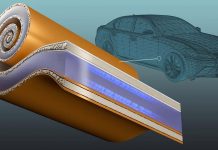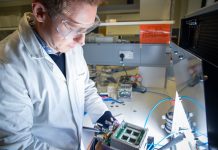
Researchers have developed a safer, cheaper, and better-performing flexible battery for wearable devices.
This new battery type is described in a paper published in the journal Nano Research Energy.
Wearable tech, such as fitness trackers, smartwatches, virtual-reality headsets, smart clothing, and implants, is becoming increasingly popular.
However, for these devices to be more comfortable, reliable, and long-lasting, their batteries need to be flexible, small, and lightweight. Safety is also a crucial factor.
In recent years, scientists have focused on developing “micro” flexible energy storage devices, or MFESDs, for these wearable gadgets.
One promising option is aqueous micro batteries (AMBs), which use a water-based solution as an electrolyte.
Aqueous batteries have been around since the late 19th century and are known for being safer and cheaper than lithium-ion batteries.
However, they have not been widely used in wearables due to their low energy density and poor performance under stress.
Ke Niu, a materials scientist at the Guangxi Key Laboratory of Optical and Electronic Materials and Devices at the Guilin University of Technology, explained, “AMBs have not lived up to their potential.
They need to withstand real-world bending and twisting to be used in wearable devices, but most have failed under such stress.”
To solve this problem, AMBs need to be self-healing, meaning they can repair themselves after being bent or twisted.
However, self-healing AMBs developed so far have used metallic compounds to carry the battery’s charge.
This leads to strong reactions between the metal ions and the electrode materials, slowing down the battery’s reaction rate and limiting its performance.
To address this issue, Junjie Shi, a researcher at the School of Physics and Center for Nanoscale Characterization & Devices (CNCD) at the Huazhong University of Science and Technology in Wuhan, and his team explored the possibility of using non-metallic charge carriers.
These carriers do not interact as strongly with the electrode materials, allowing the battery to maintain a faster reaction rate and better performance.
By using non-metallic charge carriers, the researchers have created a flexible, self-healing battery that performs well under real-world conditions. This breakthrough could lead to significant improvements in the design and functionality of wearable tech, making devices more comfortable, reliable, and safe.
In summary, the new flexible battery developed by researchers is a safer, cheaper, and more efficient option for wearable devices.
This innovation holds great promise for the future of wearable technology, ensuring better performance and longer battery life while maintaining safety and cost-effectiveness.
Source: KSR.



